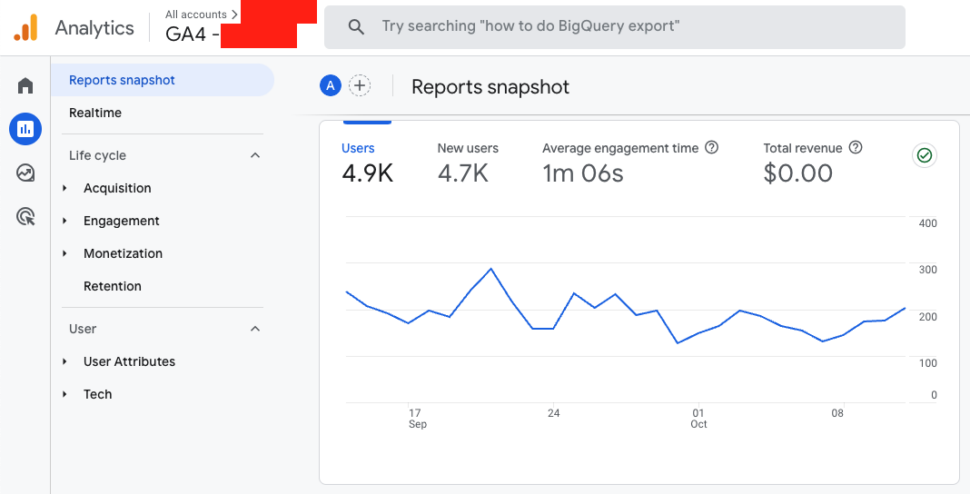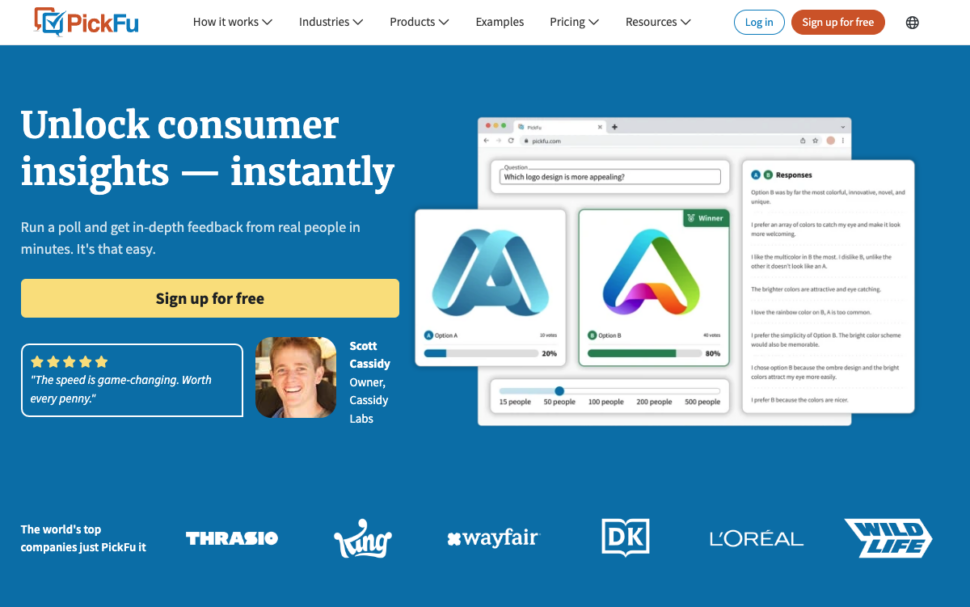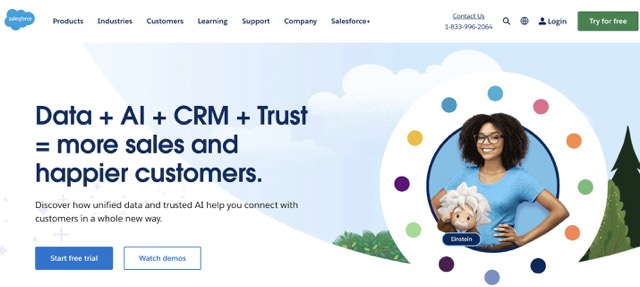The most successful businesses focus on their customers – this has always been true, but even more so in recent years. Customer-centric businesses draw more new customers, retain existing customers more reliably, and get more referrals.
The first and most important part of focusing on your customers’ needs is deeply understanding them. The best customer insights platforms help you see your business from your client’s perspective. They give you valuable knowledge about how, why, and when customers seek you out, what turns them away, and how effective your sales and marketing efforts are.
You can even use these consumer insights to make informed decisions about future products and directions, or even understand where your competitors are failing to meet a need.
Choosing a customer insights platform can be challenging. Many older and established companies already have workflows and measurement/reporting tools in place. For new companies and startups, it can be hard to know where to begin.
Read on for a comprehensive guide to the best customer insight platforms and how to select one for your business.
What is a customer insight platform (CIP)?
A customer insight platform, or CIP, is a tool that helps you collect, store, and report on the behavior and sentiment of your customers.
It might be made up of multiple elements, including:
- Web analytics
- Surveys
- Social media measurement tools
- Sales reports
The more information you gather about the customer journey, the easier it is to proactively meet customers’ needs. This leads to more successful sales and marketing efforts.
The best CIPs give you access to reliable, accurate data that helps shape your company’s direction in the marketplace.
Techniques for gathering customer insights
We already mentioned that there are many different ways to gather and assess customer insights. Here’s a quick summary of those methods:
- Web analytics: One of the most common insight tools is web traffic reporting. Examples of web analytics providers include Google Analytics and Adobe Audience Manager.
- Surveys: Survey tools (including PickFu) allow you to gather feedback directly from the horse’s mouth. By asking your existing or prospective customers direct questions, you can avoid guessing what customers want and make informed decisions based on their feedback.
- Sales reports: Sales data is a more reactive way to gather customer insights, but you can discover things like jump-off points (places where customers abandon their journey and stop shopping). Gathering abandoned cart data or shifts in sales of certain products can help you assess gaps and trends.
- Social media measurement tools: Social media is a great place to gather knowledge about customer sentiment and real-world feedback on your products or services. Tracking engagement on posts, responses to ads, and even comments can help you determine what the marketplace really thinks of your company and offerings.
Best customer insight platforms
The best CIP for you will depend on the kind of reporting and insights you want to gather. Often, the best method for any business is to use multiple tools to assess the customer journey.
Best for web analytics: Google Analytics (GA4)
Google Analytics recently evolved from Universal Analytics to GA4. Both platforms offer deep insights into the customer journey when a user lands on your site. You can track visitors, page views, common entrance and exit pages, and more. Insights like time on page and bounce rate help you understand the effectiveness of your website and optimize the user experience (UX).
Here are some benefits of GA4:
- Free for most users
- Offers complex insights
- Provides real-time data
- Use it to assess the customer experience (CX) of your site
- Report and measure data over time
- Perform A/B testing to optimize your website performance
GA4 is a powerful tool, but it only measures the way visitors interact with your website. This can help you assess your marketing efforts and improve conversions by optimizing the user experience, but it doesn’t give you deeper qualitative insights into how consumers feel about the actual product or service you’re selling.
The most effective users of GA4 inspect the various reporting views it offers and look at reactive data to prove or disprove theories about their customers. This is most effective when you pair the insights from Google with insights from a direct-source CIP that measures customer sentiment, like PickFu.
A bonus tip for Google Analytics users is to also leverage Google Trends to see how consumer research is evolving in your industry. You can also use Google Trends to help determine how to intercept your target audience in their journey and guide them back towards your product.
Honorable Mention: Adobe Audience Manager
Adobe Audience Manager enables you to gather anonymized customer data that you can use to inform business decisions. It provides customer profiles and segments for a range of users while complying with privacy regulations and legislation.
Using Adobe Audience Manager, you can track the full customer journey with important insights into their web usage and which touchpoints they engage with the most along the way.
Best CIP for Customer Sentiment: PickFu
PickFu (the site you’re on right now!) lets you ask direct, pointed questions to a network of over 15 million real customers across 90+ audience segments. This means you can approach the exact demographic you want to know more about and ask them clear questions about your product, service, or brand.
These insights allow you to fine-tune your sales messaging or marketing efforts, and even assess the performance of the products you offer.
For example, you might want to validate a new accounting service you’re thinking of offering. Your product team has an idea of what the pain points for expense reporting are, but you need to verify if the solution they offer will be effective. With PickFu, you could build a survey in just a few clicks that asks your target audience how they gather and sort receipts, and your product team can use the feedback to build the first version of the new service.
PickFu is a powerful tool for consumer insights because:
- It’s easy to set up new polls and surveys with just a few clicks
- It reaches a wide network of clearly defined audiences
- You get responses from up to 500 people within hours
- It provides detailed reporting on your survey responses
- You receive answers from real people with qualitative context, so you can more deeply understand the responses
PickFu makes it simple for any business to rapidly validate and create products or services and optimize their effectiveness in the marketplace. Survey participants provide fast, high-quality feedback, giving you valuable and reliable data to use.
You even get reports powered by AI that help assess the keywords most respondents use. These analytics tools provide clear, structured insights into customer needs and sentiment.
PickFu doesn’t offer website analytics or social media tracking, but it does offer a suite of API and integration tools that let you merge client surveys into other aspects of your business, including your customer relationship management (CRM) platforms and customer support tools.
Sign up to try your first PickFu survey free.
Honorable mention: Survey Monkey
Survey Monkey is another way to access customer feedback through direct contact. There are free versions for those businesses who only do occasional outreach. Its pricing grows exponentially for more advanced features, including data visualization, reporting, and integrations with existing market research tools and CRMs. If you’re interested in SurveyMonkey alternatives, check out the linked article!
Best CIP for social media reporting: Hootsuite
Many businesses already use Hootsuite to schedule social media posts and view performance. But Hootsuite also tracks brand mentions and sentiment across social media and delivers important reporting and insights through its paid products.
This means you can see who is mentioning your brand, product, or service, see when they’re mentioning it, and report on the customer sentiment. These tools are great because they:
- Help show the results of marketing campaigns
- Demonstrate brand or product awareness
- Help identify pain points or complaints
- Gather important insights like commonly requested updates or changes
With social media listening tools, you get a sense of the organic conversations that involve your business without probing for those answers. The main drawback is that a lot of these insights are reactive – they only show you the response to things you’ve already done, and don’t help assess future plans.
Hootsuite also reports on social media analytics like engagement and reach. Engagement data such as shares, comments, or reactions are useful because they help show you how successful a specific message or CTA is.
Using social media to assess customer satisfaction and intent is one way to get a higher-level overlook of your performance, which you can then tie to more direct and personal insights for a holistic view of the customer experience. The reporting automation features of Hootsuite make it handy for rapidly assessing consumer sentiment.
Best CIP for sales insights: Salesforce
Sales reports can do more than inform your bottom line. Smart businesses use tools like Salesforce to track and report on sales trends using their own consumer data.
A use case for this might include changing a subscription model or pricing plan. If you notice that customers abandon one plan in favor of another, or see that customers consistently move away at a certain point in their journey with your solution, that can help you come up with ideas for a new customer retention strategy.
Salesforce is a good option for a CIP because:
· It uses data from inside its native CRM system
· It provides rapid and clear reports
· It uses automation and machine learning to quickly assess sales data
After-sales insights are reactive by nature, but these customer analytics help drive business decisions that affect your existing client base. Using sales data lets you produce real-world case studies that are valuable for sales, marketing, product, and even your accounting teams.
Strategically applying the valuable insights available in your own sales data means your business decisions are based on real customer behavior. This makes for more accurate forecasting and can help improve customer loyalty.
Honorable mention: Mixpanel
Mixpanel provides a a deeper understanding of customer interactions with your products and features by helping you visualize patterns in product usage. This tool makes it easy to trace product adoption and identify which consumers will use which features and when.
The features that drive the most customer engagement are likely to be the ones that lead to the most business growth, and Mixpanel aids the decision-making process by helping combine your data sources into one report.
Mixpanel also lets you add consumer profiles and group the analytics tools into a convenient dashboard, so your in-depth insights are accessible and readable.
Optimize your customer insights platform
Using a CIP to evaluate and plan your marketing strategies, sales goals, and product development is a powerful way to make sure your business is poised to respond to the market.
These insights into consumer behavior and sentiment make for stronger business decisions and more powerful connections with your clients. A customer insights platform is only as good as the data collection methods used to inform your reports. That’s why direct and immediate customer outreach through a survey platform like PickFu is the most powerful research tool you can employ.
Existing data through web analytics and sales reports is a good way to verify your decisions. But it’s only through proactively researching customer sentiment and needs that a business can make the right decisions that lead to growth.







